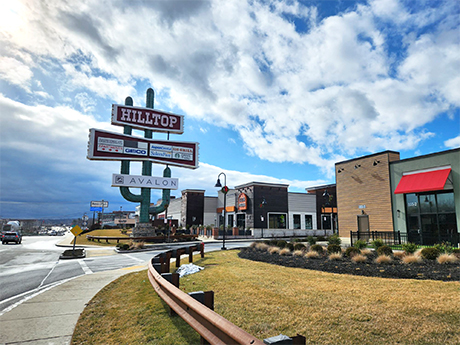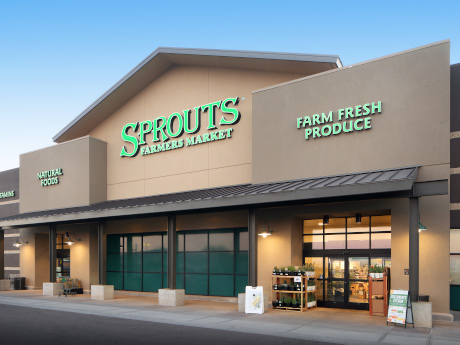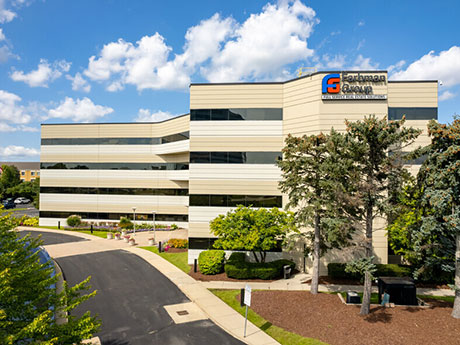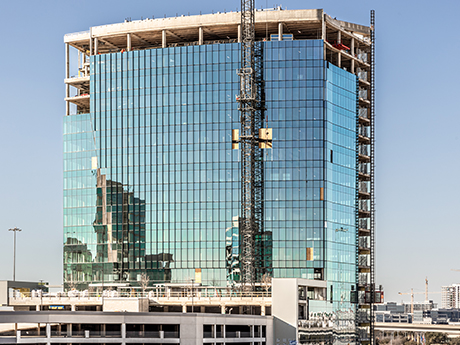Over the past decade, Nashville has enjoyed a baffling explosion of growth that sent cranes shooting up all over the city, festooned with developer names like Bell, Clark and Giarratana. Highrise towers of glass and steel rose out of the old rail yards like the emerging monolith in the opening scene of “2001: A Space Odyssey” multiplied in a funhouse mirror. The Metropolitan Government is eager to add new projects to its tax rolls, and its Assessor of Property decides when and how that happens. The assumptions made by the assessor’s office about a project’s cost and timing dictate how quickly and how much a new building is taxed. So, as always, taxpayers need to keep an eye on what the assessor is doing. The assessor’s difficult job has become even more complicated in the post-COVID quagmire of supply chain failures. Twelve-month projects have stretched into 24-month projects, and the assessor’s assumptions about completion times have been thrown out of whack. To make matters worse, Tennessee’s property tax statutes were not designed to give relief for construction delays or lengthy projects, and now the clock is ticking. Assessing new construction The last Davidson County reappraisal was in 2021, and the …
Market Reports
— By Jerry Holdner, Southern California Region Lead, Innovation & Insight, AVANT, Avison Young — The industrial market in the Inland Empire has been performing beyond what most of the industry projected over recent quarters. The region boasts a low unemployment rate of 4.2 percent, as of November 2022, which is below the anticipated 5.4 percent estimated a year ago. It is important to highlight, however, that job creation has been uneven. Leisure and hospitality jobs are still underwater, for example. The bright spot is that high-value-added jobs in a broad range of sectors like technology, software development, aerospace, scientific research, medical products and pharmaceutical development continue to grow, which bode well for the industrial sector. Here are some key market indicators, according to Avison Young’s fourth-quarter Inland Empire Industrial Insights report: • There was 38.9 million square feet of new industrial construction underway at the end of 2022. This is down 37.1 percent as compared to the end of 2021 when 28.4 million square feet was under construction. • There was 13.9 million square feet of positive absorption in 2022, down 53.5 percent when compared to 2021’s record-high total of 29.9 million square feet of positive absorption. This represents 2.5 percent …
— By Andrew Cheney, Principal, Lee & Associates — The metro Phoenix office market continues a slow recovery as it battles the nation’s highest rates of both sublease growth and inflation. Starting off the fourth quarter at only 532,000 square feet (year-to-date), net absorption in Greater Phoenix remained well off the 20-year average mark of 1.6 million square feet. Direct office vacancy stands at a seemingly high figure of 17.6 percent. However, this is in line with the 20-year average of 18 percent. Currently, there are six key trends impacting Phoenix’s office market. Small tenants are back in the office. I imagine most brokers will report that the highest concentration of active, touring prospects are in the market for less than 10,000 square feet. These company sizes want to be in the office in metro Phoenix, and not just a few days a week. High-quality spec suites rule. Landlords recognize that smaller tenants are driving leasing activity — and that these small tenants will not wait for a build-out. Instead of holding one or two spec suites in inventory at any one time, landlords are building out large batches of five to seven spec suites at a time. And they’re spending money to build …
By Steve LaMotte Jr., CBRE With 2021, a record year for asset appreciation and fundamentals, 2022 marked a turning point in the apartment space across the nation. Multifamily leasing velocity, rent growth and occupancy levels have seemingly reached their current peak levels and begun to cool. Instability in the capital markets throughout much of 2022 encouraged many on both the buy and sell sides to wait it out, looking for signs of stability. However, despite the turbulence and the pause, the multifamily sector has remained resilient and is expected to maintain its claim as the preferred asset classification in 2023. Further, metro Indianapolis has been a standout performer in every meaningful measurement. Now widely regarded as an emerging star of the Midwest, metro Indianapolis has earned its place as the nation’s rent growth leader in the back-to-back months of October and November of 2022, according to Yardi Matrix. The metro has outperformed many major markets while maintaining its characteristic affordability. According to research from CBRE Econometric Advisors, the average metro rent of $1,200 per unit ($1.30 per square foot) shows that metro Indianapolis will deliver outsized rent growth in times of distress while remaining one of the most affordable metro’s …
By Jared Glover, Director of Investment Sales, Berkadia The Las Vegas multifamily market started to feel the effects of higher interest rates alongside persistent inflation as the third quarter ended. Thankfully, properties still experienced trade-outs and overall in-place rent growth, though year-over-year growth began to moderate, coming in near 8 percent. Loss to lease capture remains, although at a slower pace than prior quarters, with average market rent at $1,515. The third quarter also saw a 3 percent decrease in occupancy, setting at 93.6 percent, after experiencing record occupancy throughout 2021. On the transaction front, we have seen a dramatic shift in cap rates. This is a direct result of the Fed’s tightening. Within a six-month span, cap rates widened upwards of 150 basis points — from low to mid-3s to 5 and trending up, depending on product type. The homogenous nature of national cap rates in 2021, with most markets trading in the 3.5 range, seems to have shifted back to historical norms as the primary/coastal markets once again demanded a premium versus secondary or tertiary markes. Both Monterra and the Boulevard traded north of a 5 cap on in-place numbers, speaking to these latest cap rate trends. Just four months ago, a …
By Ben Starr, partner at Atlantic Retail As the retail real estate industry seeks to understand what may lie ahead in 2023, a study of the wild ride it took in 2022 will likely produce the best clues. As early as March of last year, it was clear that 2022 would be a year of activity like none of the prior 15. While headlines through the spring and summer emphasized a run-up in consumer prices and a recession hovering on the back of interest rate hikes, users of retail space intensified their pursuits of new opportunities, unbowed by the looming economic clouds. Everyone — traditional commodity retailers, direct-to-consumer concepts, restaurants, fitness users, medical and other services — was chasing deals. Whether small or large or in primary, secondary or tertiary markets, activity heated up with each new month. Reflecting Larger Trends With its dense middle-class demographics, close proximity to Boston and high traffic counts, Saugus has historically been in high demand among category killers as well as high-profile service and restaurant operators. Though its local mall, Square One, has struggled as larger, more regional malls rose in upscale neighboring markets, the heavily traveled Route 1 corridor has remained one of …
— By Kyle Yocum, first vice president, and Phillip Woodford, senior vice president, CBRE — The Inland Empire office market is experiencing a rise in cost, much like all sectors and markets throughout the U.S. As tenant improvement costs continue to increase, it’s becoming more and more challenging to find win-win situations with landlords and tenants. Landlords are having to increase their TI allocations, while tenants are having to show more flexibility as it relates to working with existing space. That, or they must cover a portion of the TI costs themselves or commit to longer-term leases to help the deal pencil for the landlord. Due to TI costs, both parties need to meet halfway and make concessions. I think one of the reasons our market has done well is that we are a smaller market. Most parties involved seem to understand the give and take needed to make deals pencil for both sides. Concessions are entirely contingent on TI costs, with landlords offering significant amounts of free rent and slight discounts on the rental rate if the TI costs are low. If a tenant is seeking major changes to the space, landlords are staying close to or at their …
— Kyle Davis, Sales & Leasing Agent, Commercial Properties Inc., a CORFAC International Firm — A market cooldown is likely in 2023 as interest rates rise and the investor pool becomes more cautious to some degree. I believe many investors recall lessons from the Great Recession and are not as significantly overleveraged, which means the effects of this market correction may not be nearly as drastic. Phoenix’s retail market also has some bright spots. The area’s retail net absorption was positive at more than 1.5 million square feet, with vacancy rates down to 5.1 percent at the end of the fourth quarter of 2022. This is compared to the 1,071,783 square feet of absorption and 6.6 percent vacancy rate a year ago. Many look at factors like unemployment, interest rates, housing starts, etc., to speculate about the coming market. What will impact our industry most directly, however, is how the lending market reacts to these indicators. As with 2008 and 2020, creditors may look at the same data points as investors and lower their risk profiles significantly faster than investors are able to counteract. There will be many commercial property loans set for refinancing in the near or upcoming future, as commercial property …
By Andy Gutman, Farbman Group It’s no secret that the last few years have been a turbulent time for the office market nationally. While Detroit has fared somewhat better than some other cities across the Midwest, the same pandemic (and now post-pandemic) pressures have led to a higher-than-usual degree of uncertainty and volatility. Here in the early part of 2023, it’s a good time to take a step back and look at how the Detroit office landscape is changing, how it’s not changing and what might be in store throughout the rest of the year — and beyond. This is a unique time because there’s still a tremendous amount of uncertainty to factor into the commercial real estate market in general, and into office specifically. There are a lot of brands and businesses who either have not made up their mind about their office structure and needs going forward, or are still in an experimental post-pandemic period where they are trying to figure out the balance that works for them in terms of remote or hybrid work options and brick-and-mortar configurations. Until more of that uncertainty is resolved, a clear picture of the medium- and long-term prospects for the office …
By Eric Barnes, director of business development at SiteAware Texas has been one of the most attractive states for corporate relocations and sustained construction growth, spurred on by attractive tax benefits, a low cost of living and business-friendly policies. As such, Texas remains well-positioned for a robust and profitable construction economy heading into 2023. According to The Wall Street Journal, Texas cities rank among the fastest-growing in the country in terms of population. This strong population growth, coupled with a robust job market and strategic location, continues to attract employers. In 2021, the state saw a record number of headquarters relocations. Though that figure dipped in 2022 due to the conclusion of state-sponsored tax breaks, the local market remains healthy and attractive to developers and investors. In addition, the slowing down of relocations isn’t necessarily bad because it allows the state to ensure the success of companies already operating in Texas. Regardless of this dip in activity, the heightened need for more multifamily and commercial development continues and has translated to an influx of construction projects within the state. Challenges, Opportunities Texas contractors and developers are looking for better ways to manage construction sites and take on more projects to …










